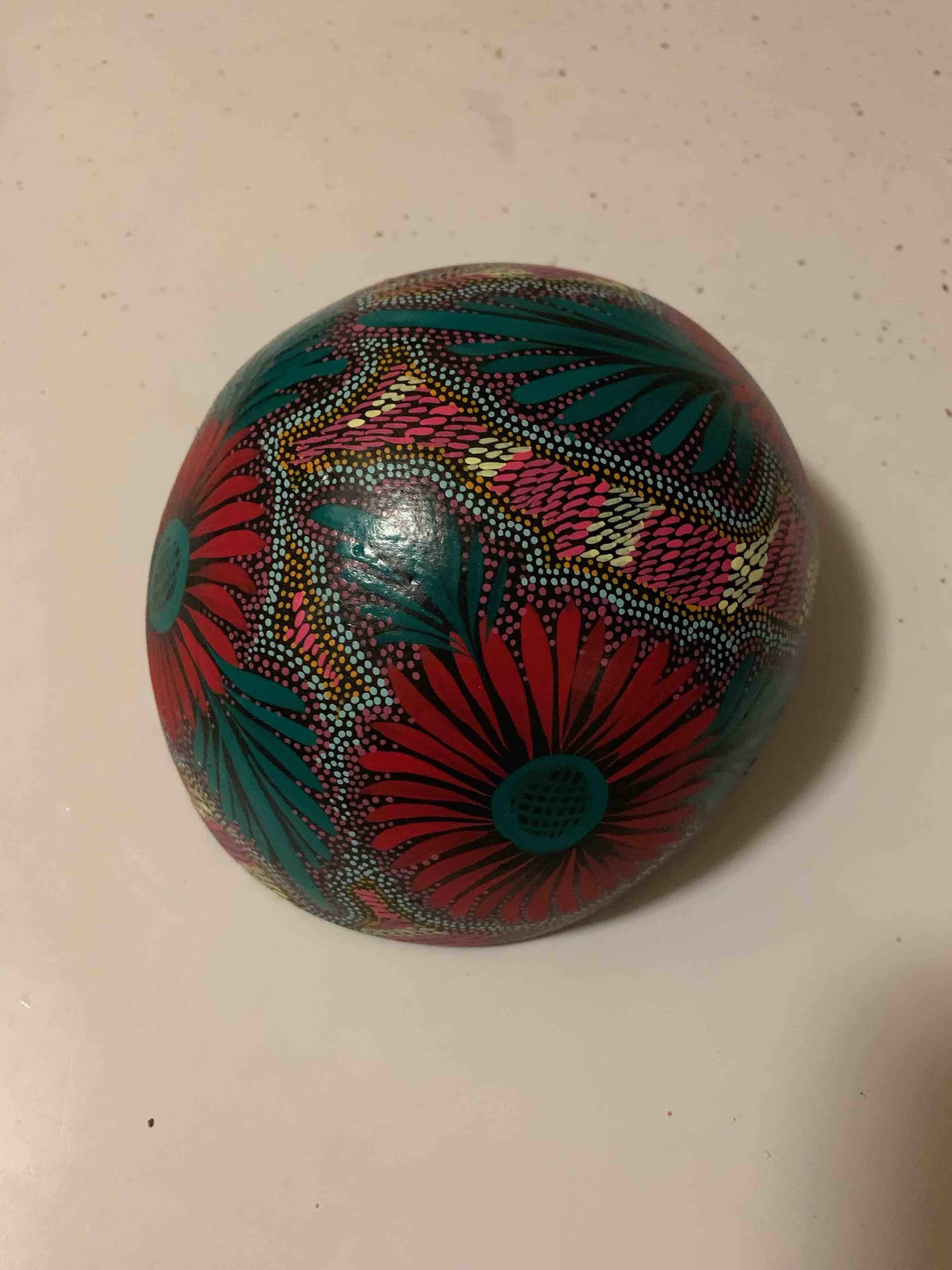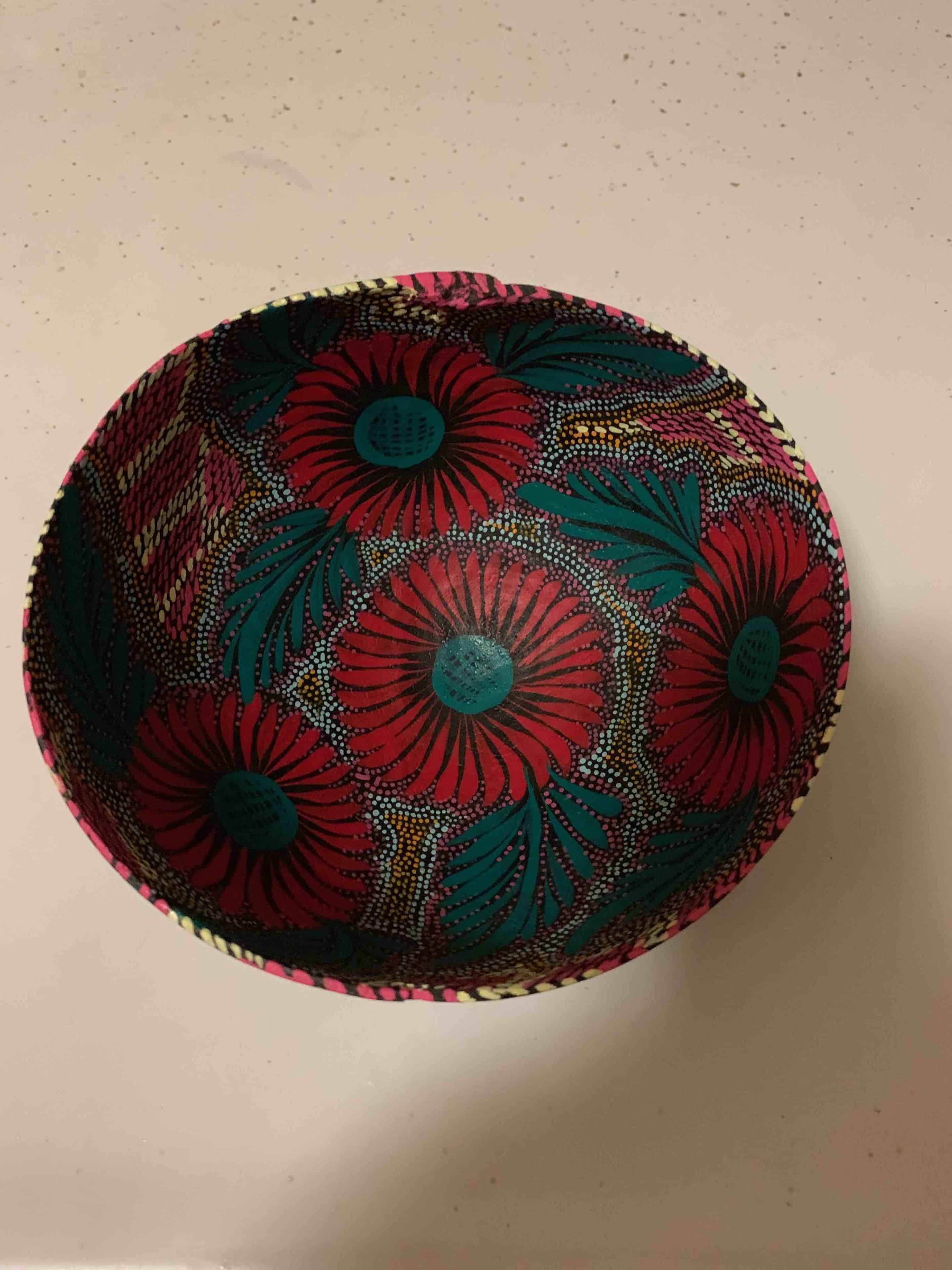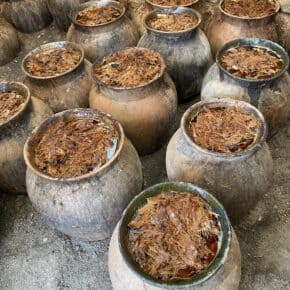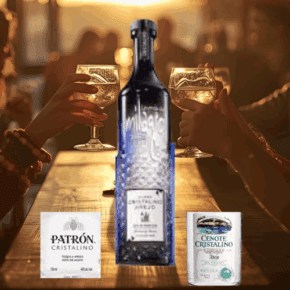If you’ve ever been to Oaxaca you’ve seen the dried gourd halves in all the markets where there are piles of them in sizes ranging from those that fit the palm of your hand to those that are bigger than your head. We in the mezcal world know them primarily as drinking vessels and indeed, the word “jicara” means cup in Spanish.
Generally they are described as dried gourds repurposed for drinking. Frequently they even come with a small hole bored near the rim so that you can attach them to a necklace. That leaves your hands free at tastings. As for the implication that you have to drink everything in them before moving, we’ll leave that to you.
But jicaras are so much more than mezcal. Of course you can drink anything from them, they’re just another of nature’s drinking vessels ready for water, juice, whatever. But if you look at the local craft markets across Mexico you’ll find jicaras transformed into works of art. In Oaxaca they’re painted, in Nayarit the Huichol line them with beads, some people etch them, they are even the source of traditional maracas. But the story doesn’t end there…


Jicaras are the dried fruit of the Crescentia cujete tree, otherwise known as treegourds. And they’re more than just vessels. As with many things in Mexico (hello agave!) they’re used for a variety of activities. While some sources counsel that the raw fruit is poisonous, it is widely used for a variety of medicines in numerous indigenous traditions. I’ve also heard, but never seen, that the pulp used as an infusion in mezcal. Lest you think this is purely a Mexican story, the Crescentia cujete tree grows throughout the tropics and is used for similar purposes everywhere. In the Yucatan jicaras are used as bowls for pozole and chocolate, in Mali as coffee cups, and a bewildering variety of musical instruments. It sort of feels like a tropical miracle fruit.
A special note: Since jicaras are organic, they will break down if they’re left damp. No amount of careful attention will keep them pristine after sustained exposure to mezcal. I’ve had jicaras for years which I carefully dry after every use but you can’t expect every organic product to live forever, so enjoy the perfect fit in your hand, the rough edges, and the all around feeling that comes with a jicara. It’s a reminder of their mortality.
Read more of our entries in the Mezcalistas Encyclopedia of Mezcal and email us questions or ideas for future entries.












Hello!
I search for the possibility, to create a personalized mezcal-cup, for example to create a own form made of the kalabasse tree.
Do you know any person who can help me with it?
Thank you very much, best regards!